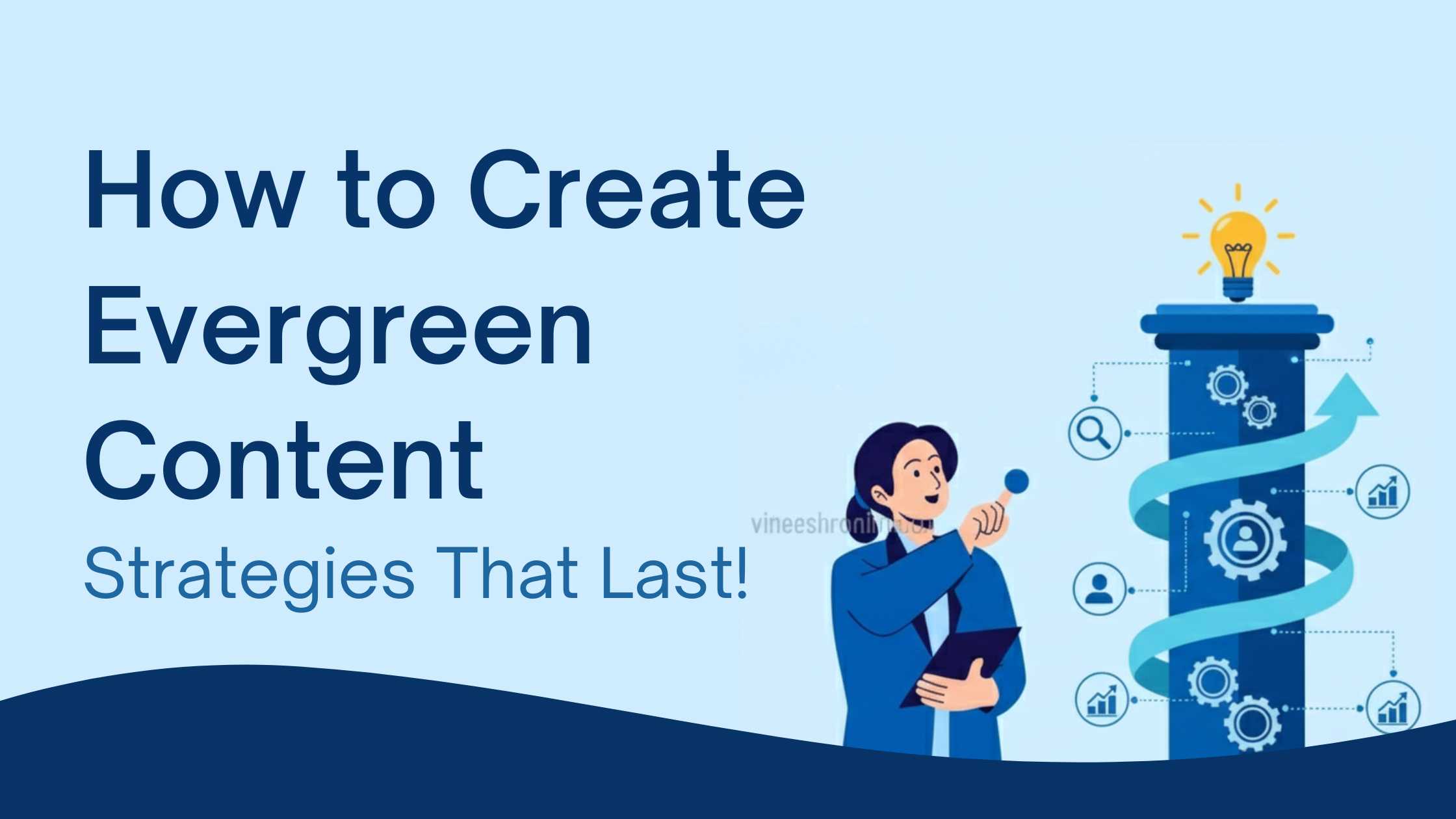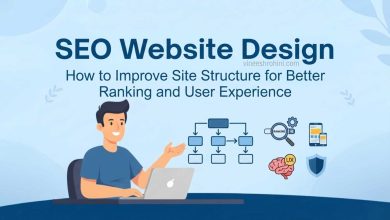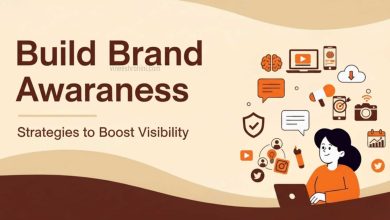The Impact of AI-Generated Content on SEO and Marketing – Comprehensive Guide 2025
AI-Generated Content : AI-generated content has moved from novelty to necessity. In 2025, large language models (LLMs), multimodal generators, and autonomous content agents are embedded into the daily workflows of marketers, publishers, and ecommerce teams. They write first drafts, generate images and short-form videos, summarize research, personalize landing pages, and even power customer service. This scale and speed is reshaping how search engines evaluate content, how brands compete for attention, and how marketing teams organize their work.
Table of Contents
This guide explains the impact of AI-generated content on SEO and marketing, the risks and rewards, and the exact playbooks to use so you grow traffic and revenue without tripping quality, authenticity, or policy wires.
Part 1: Understanding AI-Generated Content in 2025

What “AI-Generated Content” Means Now
AI content is no longer just machine-written blog posts. In 2025, it spans:
- Text: articles, product descriptions, email sequences, ad copy, scripts, metadata, FAQs.
- Images & Graphics: product renders, blog artwork, ad creatives, social carousels.
- Audio & Video: voiceovers, short-form edits, captioning, repurposed podcast/video clips.
- Data-Aware Experiences: landing pages and emails personalized by user intent, behavior, or CRM segments.
- Agents & Automations: tools that research, outline, draft, interlink, and even publish with guardrails.
Where It Fits in the Marketing Funnel
- Awareness: scalable thought leadership, UGC-style short videos, PR snippets, expert roundups.
- Consideration: product comparisons, buying guides, demo scripts, interactive calculators.
- Conversion: CRO-tested headlines, benefit-driven copy, localized landing pages.
- Retention: lifecycle email flows, FAQ updates, help-center content, loyalty promos.
- Advocacy: case studies, testimonial prompts, referral program assets.
Part 2: How AI Is Changing SEO Fundamentals
1) Search Is Becoming Answer-First
Search experiences increasingly synthesize results into AI overviews that answer queries directly. This rewards:
- Entity-rich content (clear people/places/things)
- Structured data (Schema.org)
- Authoritativeness and freshness (timely updates, credible sources)
To win, think “be the source the overview cites,” not just “rank #1 blue link.”
2) E-E-A-T Is Non-Negotiable
Experience, Expertise, Authoritativeness, and Trust guide how quality is assessed. AI accelerates drafting, but human editorial oversight must add:
- First-hand experience (tested instructions, real screenshots, original data)
- Qualified bylines and author pages
- Citations to primary sources
- Transparent sourcing and conflict-of-interest disclosures
3) Topical Authority Beats Topic Scatter
AI makes it cheap to publish. Search engines respond by rewarding depth over volume. Build topic clusters: cornerstone guides + supporting articles that interlink semantically. AI helps map clusters and draft outlines; humans ensure originality, nuance, and proof.
4) Information Gain and Originality
“Information gain” measures whether a page adds something new relative to existing results. Win by integrating:
- Proprietary data (surveys, telemetry, anonymized product usage)
- Unique frameworks, visuals, calculators, and checklists
- First-party quotes and field tests
AI can rephrase; you must contribute.
Also Read : The Rise of Answer Engine Optimization in Digital Marketing
5) Technical & Programmatic SEO—With Restraint
It’s tempting to mass-generate thousands of pages. Excess thin/duplicative content triggers quality demotions. Safeguards: canonicalization, crawl budget control, quality thresholds, and content pruning cadence.
Part 3: The Real Benefits of AI for Marketers
Speed to First Draft
AI turns briefs into outlines and outlines into drafts in minutes. The bottleneck shifts from typing to judgment (is the draft accurate, useful, differentiated?).
Personalization at Scale
Use customer attributes (industry, role, lifecycle stage) to generate dynamic copy and adaptive CTAs across emails, ads, and landing pages—tested via controlled experiments.
Repurposing and Content Atomization
Turn a webinar into a long-form article, executive summary, social snippets, email drip, and short-form videos—all consistent in message and tracked back to one campaign.
Creative Variations for CRO
Generate headline, hero, and product-copy variants for A/B/n tests. Let data decide, not HiPPOs (Highest-Paid Person’s Opinion).
Part 4: The Risks to Manage
Hallucinations and Inaccuracies
LLMs can assert falsehoods confidently. Mitigation: retrieval-augmented generation (RAG), source citations, human fact-checking, and model prompts that ask for uncertainty (e.g., “If unknown, say unknown”).
Policy, Disclosure, and Copyright
Respect platform rules and local laws: avoid using copyrighted or sensitive training materials; disclose AI assistance when editorially relevant; do not fabricate endorsements or reviews.
Brand Voice Drift
Multiple tools and prompts can splinter tone. Solve with a brand voice system: persona, style rules, approved phrases, banned claims, tone sliders, and reference exemplars used in prompts.
Scale Abuse & Quality Dilution
Publishing speed can outrun QA. Enforce quality gates (readability, originality, entity coverage, info gain, compliance checks) before publish.
Part 5: A Practical 2025 SEO Playbook for AI-Assisted Content
Step 1: Topic Intelligence and Demand Mapping
- Mine search demand (short, mid, long-tail), SERP features, and user intent.
- Group into topic clusters with clear parent pillars.
- Define content purpose (rank, linkable asset, sales enablement, post-purchase support).
Step 2: Outline With Entities and Questions
- Include entities (brands, standards, locations) and user questions (who/what/why/how).
- Pre-decide sections where you’ll add first-hand evidence: data, screenshots, quotes, experiments.
Step 3: Draft With Guardrails
Prompt template:
- “Write for [ICP/industry/region].
- Optimize for [primary keyword] and cover entities [X, Y, Z].
- Cite sources for statistics.
- Surface uncertainty; avoid claims without references.
- Leave placeholders for first-party screenshots and data.”
Step 4: Human Editorial Pass (Non-Skippable)
- Fact-check names, numbers, compliance claims.
- Add experience markers: real examples, gotchas, personal tests.
- Tighten POV: what’s your stance vs. competitors?
- Insert original visuals (charts, annotated screenshots).
Step 5: On-Page SEO Enhancements
- Title (benefit-led), H1 (clarifying), H2/H3 with questions, succinct intro.
- Schema markup (Article, HowTo, FAQ, Product, Review) where applicable.
- Internal links: 3–7 relevant pages; one “money page” CTA.
- Media optimization: descriptive alt text, light images, lazy-load.
Step 6: Publish, Measure, Improve
- Track: impressions, Taps, CTR, average position, AI-overview citations, dwell time, scroll depth, conversions, assisted revenue.
- Set refresh cadences (e.g., quarterly for money pages).
- Run multivariate tests on titles, intros, and CTAs.
- Prune or consolidate underperforming pages.
Part 6: E-E-A-T: Operationalizing Trust in an AI Era
Author and Brand Credibility
- Real bylines with bios, credentials, and LinkedIn profiles.
- About/Contact/Editorial policy pages visible and detailed.
- Third-party signals: awards, certifications, reputable mentions.
Evidence Layer
- Link to primary sources, standards bodies, and official docs.
- Embed proprietary research or benchmark data.
- Include dates on claims; specify regions (laws, pricing vary).
Experience Signals
- First-hand photos, code repos, demo videos, lab notes, field tests.
- “We tried it” sections with methodology and outcomes.
- Clear disclaimers where advice could be risky (finance, medical, legal).
Part 7: Structured Data, Entities, and Knowledge Graph Alignment
Why Entities Matter
Search increasingly connects queries to entities and relationships, not just strings of words.
Actions:
- Use consistent names for people/brands/products.
- Add Organization/Person schema with sameAs links.
- Mark up FAQs, HowTos, Products, and Reviews.
- Create entity-rich glossaries and hub pages that define your niche.
Content Design for AI Overviews
- Lead with direct, scannable answers; expand with detail.
- Include concise definitions, bullet steps, and short tables.
- Pair each claim with a credible source—help models select and quote you.
Part 8: Link Building in an AI-Dense Web
What Still Works
- Original research (surveys, benchmarks) that publishers cite.
- Free tools and calculators embedded by others.
- Visual assets (diagrams, templates, data cards) with embed codes.
- Opinionated thought leadership that offers new frameworks.
What Fades
- Thin guest posts, spun content, and generic skyscrapers.
- Low-effort link exchanges and comment spam.
AI makes producing mediocre content cheap; editorial selectivity rises.
Part 9: AI for CRO, Ads, and Email
Conversion Rate Optimization
- Generate multiple headline/hero/CTA variants; test via A/B/n.
- AI heatmaps predict attention; pair with real user tests.
- Dynamic copy based on segment, referrer, device, or stage.
Advertising
- Creative iteration: 10–50 concept variations per sprint.
- Message-market fit: scripts and visuals localized by persona and region.
- Budget efficiency: AI assists with negative keywords, bid strategies, and frequency capping recommendations.
Email & Lifecycle
- AI-drafted flows: welcome, onboarding, win-back, upsell.
- Predict send times, subject line variants, and content blocks per segment.
- Guard against over-personalization creep; respect privacy preferences.
Part 10: Governance—Policies, QA, and Compliance
Build a Content Governance Framework
- Acceptable Use: topics, sources, and claims allowed; risk classes.
- Disclosure: when to label AI assistance; editorial accountability.
- QA Checklist: fact checks, plagiarism/originality, E-E-A-T review, legal.
- Model & Prompt Registry: versions, change logs, evaluation scores.
- Red Teaming: adversarial tests for bias, hallucination, and policy gaps.
The Human-in-the-Loop Model
AI drafts → editor fact-checks → SME adds experience → legal/compliance review → SEO polish → publish. No single step can be skipped.
Part 11: Local, Multilingual, and Accessibility Considerations
Localization Beyond Translation
- Adapt examples, pricing, regulations, and idioms to each locale.
- Use local keyword research; align with local SERP features (maps, marketplaces).
- Maintain glossaries for product terms per language.
Accessibility
- Alt text that describes function, not just form.
- Clear language and headings; adequate color contrast.
- Captions/transcripts for video and audio—AI can auto-draft, humans verify.
Part 12: Analytics—Measuring the ROI of AI Content

KPI Map
- Top-of-funnel: impressions, AI-overview inclusion, brand search lift.
- Mid-funnel: engagement rate, scroll depth, return visits, assisted conversions.
- Bottom-funnel: form fills, trials, revenue, LTV/CAC.
- Quality: info gain scores (internal rubric), backlink velocity and quality, editorial acceptance rate.
Experiment Design
- Holdout geos/segments for uplift measurement.
- Pre-register success criteria (minimum detectable effect) to avoid p-hacking.
- Post-experiment learnings feed back into prompts and templates.
Part 13: Team Structure and Workflow in 2025
Roles That Win
- Content Strategist: topic authority map + briefs.
- Prompt Engineer/Content Ops: reusable templates, guardrails, automation.
- Subject Matter Experts (SMEs): experience injection and credibility.
- Editors/Fact-Checkers: truth and tone.
- SEO Lead: entity strategy, structured data, internal links.
- Design/Multimedia: original charts, diagrams, short-form video.
Tools Stack (Illustrative)
- Research: keyword/entity tools, trend dashboards, survey tools.
- Generation: LLMs, image/video models, RAG systems.
- QA: plagiarism/originality checks, fact-check workflows, reading-level checks.
- SEO: schema generators, internal link planners, log analyzers.
- Analytics: product analytics, SEO suites, A/B testing platforms, attribution.
Part 14: Ethical and Strategic Considerations
Transparency and Reader Trust
Disclose when content is AI-assisted if it affects interpretation. Readers reward honesty—trust is a moat.
Copyright and Training Data
Favor models and stock providers that respect creator rights. When in doubt, license or create original.
Avoiding Homogenization
If everyone uses the same tools, content converges. Differentiate via:
- Proprietary data and examples
- Strong editorial stances
- Brand-specific voice and design systems
- Community co-creation (interviews, panels, field notes)
Part 15: Future Outlook (2025–2026)
- Interactive answers: search experiences that let users refine follow-ups inline—optimize to be the trusted citation.
- Agentic workflows: autonomous systems that execute multi-step tasks; marketers supervise quality and ethics.
- Richer attribution: better tracking of AI-overview citations and multi-touch journeys.
- Tighter authenticity signals: cryptographic content provenance (watermarks/signatures) and stricter spam detection.
- First-party data advantage: brands with community and usage data create content no model can clone.
Actionable Checklist: AI Content That Wins in SEO and Marketing (2025)
- Define topical authority with clusters and hub pages.
- Seed briefs with entities and user questions; choose a clear intent.
- Use AI for speed, but add human experience and proofs.
- Cite primary sources; timestamp claims; localize responsibly.
- Implement structured data; maintain consistent entity references.
- Build author pages and an editorial policy; show your credentials.
- Measure AI-overview citations, info gain, and assisted revenue.
- Refresh your money pages on a schedule; prune low-value content.
- Experiment with copy and creative variations; keep a win library.
- Govern with QA checklists and disclosure; keep a prompt registry.
Buy Now : Ecommerce Website
AI-Generated Content on SEO – Conclusion:

AI is a force multiplier, not a replacement for judgment, experience, or ethics. The brands that win in 2025 combine AI’s speed with human expertise, publish fewer but better pieces, demonstrate experience with proof, and measure outcomes rigorously. Treat AI as creative infrastructure—accelerating research, drafting, and iteration—while your team supplies the originality, credibility, and empathy that search engines and customers reward. If you build systems around that philosophy, AI-generated content won’t just be compatible with SEO and marketing—it will be your competitive edge.
Keywords : AI-Generated Content – AI-Generated Content 2025



